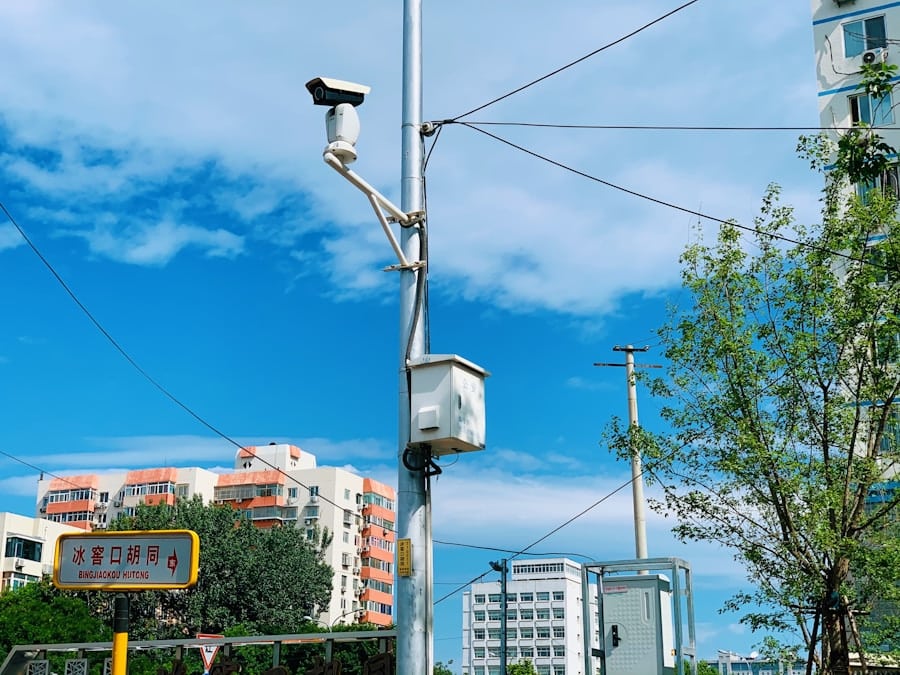The advent of 5G technology marks a significant leap forward in the realm of connectivity, particularly in the context of the Internet of Things (IoT). As cities evolve into smart urban environments, the integration of 5G-enabled IoT devices is becoming increasingly pivotal. These devices, which range from smart sensors to autonomous vehicles, are designed to communicate seamlessly with one another, creating a network that enhances the efficiency and functionality of urban living.
The high-speed, low-latency capabilities of 5G networks facilitate real-time data exchange, enabling a level of interconnectivity that was previously unattainable. The implications of this technological advancement are profound. With 5G, the potential for innovation expands exponentially, allowing for the development of applications that can transform everyday life.
For instance, smart homes equipped with IoT devices can optimize energy consumption, while smart cities can leverage data analytics to improve public services. As urban populations continue to grow, the need for efficient infrastructure and resource management becomes increasingly critical. 5G-enabled IoT devices are at the forefront of this transformation, promising to enhance the quality of life for residents while addressing the challenges posed by urbanization.
Key Takeaways
- 5G-enabled IoT devices are revolutionizing urban living by providing enhanced connectivity and communication.
- Smart transportation and traffic management systems are being improved with the integration of 5G-enabled IoT devices.
- Efficient energy and resource management is made possible through the use of 5G-enabled IoT devices in urban environments.
- Improved public safety and security are key benefits of 5G-enabled IoT devices in urban living.
- Enhanced healthcare and emergency services are being facilitated by the integration of 5G-enabled IoT devices in urban areas.
Enhanced Connectivity and Communication
One of the most significant advantages of 5G technology is its ability to provide enhanced connectivity and communication capabilities. Unlike its predecessors, 5G offers significantly higher bandwidth and lower latency, which are essential for supporting a vast array of IoT devices. This means that thousands of devices can connect simultaneously without experiencing lag or degradation in performance.
For example, in a smart city environment, traffic lights, surveillance cameras, and environmental sensors can all communicate in real-time, allowing for more efficient management of urban resources. Moreover, the enhanced communication capabilities of 5G enable more sophisticated applications that rely on instantaneous data transfer. Consider autonomous vehicles that depend on real-time information from their surroundings to navigate safely.
With 5G, these vehicles can receive updates about traffic conditions, road hazards, and even weather changes almost instantaneously. This level of responsiveness not only improves safety but also contributes to smoother traffic flow and reduced congestion. The ability to connect multiple devices seamlessly creates a robust ecosystem where information is shared rapidly and efficiently, paving the way for smarter urban environments.
Smart Transportation and Traffic Management
The integration of 5G-enabled IoT devices into transportation systems is revolutionizing how cities manage traffic and mobility. Smart transportation solutions leverage real-time data to optimize traffic flow, reduce congestion, and enhance overall efficiency. For instance, connected traffic signals can adjust their timing based on current traffic conditions, ensuring that vehicles move smoothly through intersections.
This dynamic approach minimizes wait times and reduces emissions from idling vehicles. Additionally, public transportation systems are benefiting from 5G technology as well. Buses and trains equipped with IoT sensors can provide real-time updates to passengers regarding arrival times and delays.
Furthermore, ride-sharing services can utilize 5G connectivity to match drivers with passengers more efficiently, optimizing routes and minimizing travel times. The cumulative effect of these advancements is a more integrated and responsive transportation network that enhances mobility within urban areas.
Efficient Energy and Resource Management
Energy management is another critical area where 5G-enabled IoT devices are making a significant impact. Smart grids equipped with IoT sensors can monitor energy consumption patterns in real-time, allowing utility companies to optimize energy distribution based on demand. This capability is particularly important in urban settings where energy consumption can fluctuate dramatically throughout the day.
By leveraging data analytics and machine learning algorithms, energy providers can predict peak usage times and adjust supply accordingly, reducing waste and lowering costs for consumers. Moreover, smart buildings equipped with IoT devices can monitor and manage energy usage more effectively. For example, smart thermostats can learn occupants’ preferences and adjust heating or cooling systems automatically to maximize comfort while minimizing energy consumption.
Similarly, smart lighting systems can adjust brightness based on natural light levels or occupancy, further enhancing energy efficiency. The integration of these technologies not only leads to cost savings but also contributes to sustainability efforts by reducing the overall carbon footprint of urban environments.
Improved Public Safety and Security
Public safety is a paramount concern for urban planners and residents alike, and 5G-enabled IoT devices are playing a crucial role in enhancing security measures within cities. Surveillance systems equipped with high-definition cameras and advanced analytics can monitor public spaces in real-time, identifying potential threats or unusual activities. With 5G’s low latency capabilities, law enforcement agencies can respond more quickly to incidents as they unfold, improving overall safety for citizens.
In addition to surveillance systems, emergency response services are also benefiting from enhanced connectivity. First responders equipped with IoT devices can access critical information about incidents while en route to the scene. For instance, ambulances fitted with telemedicine technology can transmit patient data to hospitals before arrival, allowing medical staff to prepare for treatment in advance.
This level of preparedness can be life-saving in critical situations where every second counts. Furthermore, smart emergency alert systems can disseminate information rapidly during crises, ensuring that residents receive timely updates about potential dangers or necessary evacuations.
Enhanced Healthcare and Emergency Services
The healthcare sector is undergoing a transformation driven by 5G-enabled IoT devices that facilitate remote monitoring and telehealth services. Wearable health devices that track vital signs such as heart rate or blood pressure can transmit data in real-time to healthcare providers via 5G networks. This continuous stream of information allows for proactive health management and timely interventions when abnormalities are detected.
For patients with chronic conditions or those requiring regular monitoring, this technology can significantly improve health outcomes by enabling early detection of potential issues. Telehealth services are also being revolutionized by 5G technology. Patients can engage in virtual consultations with healthcare professionals without experiencing lag or interruptions in communication.
This accessibility is particularly beneficial for individuals living in remote areas or those with mobility challenges who may find it difficult to visit healthcare facilities in person. Additionally, during public health emergencies such as pandemics, telehealth services provide a safe alternative for patients seeking medical advice while minimizing the risk of spreading infections.
Sustainable Urban Development and Environmental Monitoring
As cities strive for sustainability amidst rapid urbanization, 5G-enabled IoT devices are proving invaluable in environmental monitoring and resource management. Smart sensors deployed throughout urban areas can collect data on air quality, noise levels, and water usage, providing insights into environmental conditions that affect residents’ quality of life. This data-driven approach enables city planners to make informed decisions regarding infrastructure development and environmental policies.
For instance, air quality monitoring systems can detect pollutants in real-time and alert authorities when levels exceed safe thresholds. This information allows for timely interventions such as implementing traffic restrictions or promoting public transport usage during high pollution days. Additionally, smart waste management systems equipped with sensors can optimize collection routes based on bin fill levels, reducing fuel consumption and operational costs while ensuring cleaner streets.
By leveraging 5G technology for environmental monitoring, cities can work towards creating healthier living conditions for their inhabitants.
The Future of 5G-Enabled IoT in Urban Living
The future of urban living is intricately linked to the advancements brought about by 5G-enabled IoT devices. As cities continue to evolve into smart environments that prioritize efficiency, sustainability, and quality of life for residents, the role of these technologies will only become more pronounced. From enhancing transportation systems to improving healthcare access and environmental monitoring, the potential applications are vast and varied.
As we look ahead, it is clear that the integration of 5G technology into urban infrastructure will pave the way for innovative solutions that address the challenges posed by growing populations and resource constraints. The promise of smarter cities lies not only in technological advancements but also in fostering collaboration among stakeholders—governments, businesses, and communities—to create inclusive environments that benefit all residents. The journey towards fully realizing the potential of 5G-enabled IoT devices is just beginning, but its impact on urban living will undoubtedly shape the future for generations to come.
A related article to “How 5G-Enabled IoT Devices Are Improving Urban Living Standards” is “How Smartwatches Are Enhancing Connectivity.” This article discusses the ways in which smartwatches are revolutionizing the way we stay connected and informed in our daily lives. From tracking fitness goals to receiving notifications on the go, smartwatches are becoming an essential tool for staying connected in today’s fast-paced world. To learn more about how smartwatches are enhancing connectivity, check out the article here.
FAQs
What is 5G technology?
5G technology is the fifth generation of mobile network technology, offering faster speeds, lower latency, and the ability to connect a massive number of devices simultaneously.
What are IoT devices?
IoT devices, or Internet of Things devices, are everyday objects that are connected to the internet, allowing them to send and receive data. These devices can range from smart thermostats and security cameras to wearable fitness trackers and industrial sensors.
How are 5G-enabled IoT devices improving urban living standards?
5G-enabled IoT devices are improving urban living standards by enabling faster and more reliable connectivity for smart city infrastructure, such as traffic management systems, public transportation, and energy grids. This leads to improved efficiency, safety, and sustainability in urban areas.
What are some examples of 5G-enabled IoT applications in urban environments?
Some examples of 5G-enabled IoT applications in urban environments include smart parking systems, air quality monitoring, intelligent street lighting, and real-time public transportation tracking. These applications help cities become more efficient, sustainable, and responsive to the needs of their residents.
What are the potential benefits of 5G-enabled IoT devices for urban living?
The potential benefits of 5G-enabled IoT devices for urban living include improved public safety, reduced traffic congestion, lower energy consumption, enhanced environmental monitoring, and better access to public services. These benefits contribute to a higher quality of life for urban residents.



